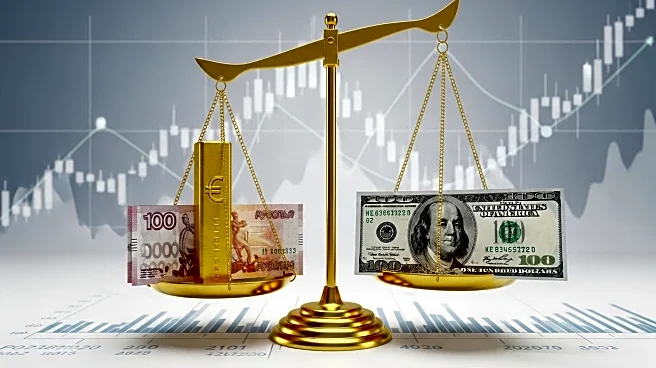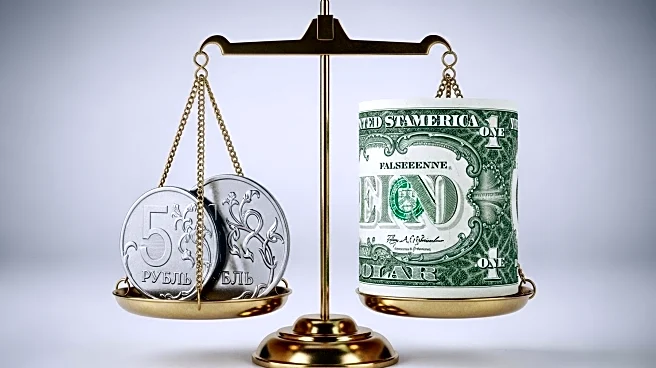What is the story about?
What's Happening?
The Russian rouble has reached its strongest level against the US dollar since early September, appreciating by approximately 2% to 80.85 per dollar. This development is attributed to several economic factors, including expectations of a slower pace of interest rate cuts by the Russian central bank. Additionally, the announcement of tax hikes set for 2026 and increased sales of Russian oil have contributed to the rouble's strengthening. In September, Russia's maritime oil exports surged to their highest level in 16 months, driven by refinery outages due to Ukrainian drone attacks, which freed up more crude for export.
Why It's Important?
The strengthening of the rouble against the US dollar has significant implications for Russia's economy and its international trade dynamics. A stronger rouble can impact Russia's export competitiveness, particularly in the energy sector, which is a major component of its economy. The increased demand for Russian oil, coupled with strategic economic adjustments like tax hikes and controlled interest rate cuts, suggests a deliberate effort by Russia to stabilize its currency and bolster its economic resilience. This development may affect global oil markets and influence economic relations between Russia and its trading partners, including the US.
What's Next?
Looking ahead, the Russian central bank's monetary policy decisions will be closely watched, as any changes in interest rates could further influence the rouble's value. Additionally, geopolitical factors, such as the ongoing conflict with Ukraine and international sanctions, may continue to impact Russia's economic strategies and currency stability. Stakeholders in the global energy market will likely monitor Russia's oil export levels and pricing strategies, as these could have broader implications for global energy supply and pricing.
AI Generated Content
Do you find this article useful?














